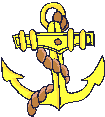



Background Information
Oceans are huge bodies of water, usually separating the continents. There are five oceans: the Pacific, Atlantic, Arctic, Antarctic, and Indian Oceans. If you look closely at a globe you will notice that they are not separate from each other. All together the oceans cover two-thirds of our planet. The Pacific Ocean is the largest and deepest. It covers more than a third of the globe. Next largest is the Atlantic. The smallest of the five is the Arctic. These oceans influence the climate, supply us with food. power, and valuable minerals and provide a home for an enormous number of plants and animals.
The ocean is a never ending series of waves. The waves contribute to the tides rising and falling. These waves help in the landscape and weather in the world. Waves create cliffs and beaches. Ocean currents contribute to the forming of storms and hurricanes.
The animals and plants that make the ocean their home are used for food, medicines and even jewelry.
The energy from the waves can be used to generate energy for man's use.
Lastly, the ocean is home to a large range of sea life, from microscopic to the largest creatures found of the face of the earth. Many species that make the ocean their home are yet to be discovered.
The ocean is a thing of beauty. Let's become oceanographers and study the ocean and its mysteries by splashing right into this incredible underwater world.
| The
Water Cycle
|
Hold
the Salt, Please!
|
| Ocean
Currents
|
The
Ocean Floor
|
| What
Lives in the Ocean?
|
Ocean
Pollution
|
| Other
Activities
|
Links
and Resources
|
Note: Students will be keeping an Electronic Ocean Journal on disk throughout this unit. They can use any word processor available to them to write their entries daily. Students must enter the date for each entry. At the end of the Underwater Journey, students can share their journals with the rest of the class.
 Home
Home